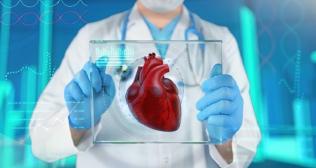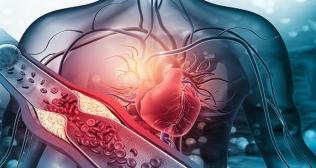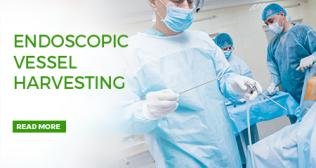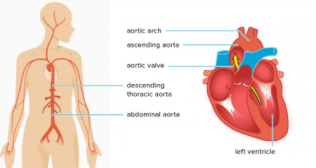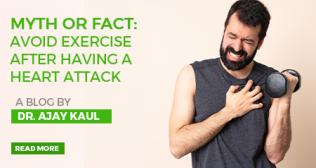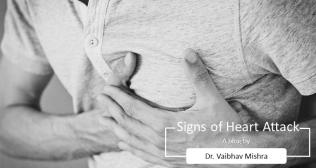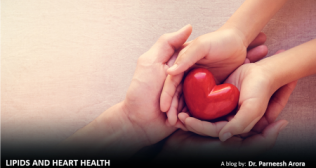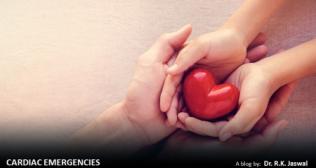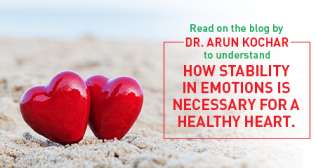
Proper Treatment of Heart Valves Can Save A Life

There are four valves in the heart, two on the left side called mitral and aortic valves and two on the right side called tricuspid and pulmonary valves.Most of the valvular heart diseases in adult patients arise from left sided valves that are mitral and aortic valves. Tricuspid valve can be involved in many cases mostly in combination with mitral valve though in rare circumstances it can be involved in isolation also.
WHAT HAPPENS IN VALVE DISEASE
The valves in the heart regulate the flow of blood from one chamber of the heart to another by regulating the forward and backward flow through them. The valves open up during a specific time during the contraction of the heart to allow forward flow through the valve and remain closed during the rest of the cardiac cycle so that blood does not come back. With disease, the valve becomes small and it obstructs the forward flow of blood. This is called stenosis. Or it starts leaking during the period when it should be closed. This is called regurgitation. So the valvular diseases can be broadly divided into two groups: Stenosis or regurgitation.
CAUSES OF VALVE DISEASE
The most common lesion in mitral valve, in young patients, is mitral stenosis. In India, the most common cause of mitral stenosis is rheumatic heart disease, which occurs due to an infection during childhood with bacteria called group A streptococci. Due to this infection in childhood, the valves of the heart start getting damaged and either stenosis or regurgitation or both may occur, though stenosis is more common of the two. In elderly patients, mitral regurgitation is more common and is due to either prolapse of the valve or due to ischaemic heart disease. In aortic valve disease, the most common cause in young patients again, is rheumatic heart disease. Aortic stenosis occurs more commonly in older patients after 50 years of age and is mainly due to either a congenital condition of the valve called bicuspid aortic valve in which the valve is deformed since birth. The other reason for aortic stenosis is degenerative or calcific aortic valve seen mainly in the age group of above 60 years. The tricuspid valve involvement is almost always in conjunction with mitral valve. In majority of cases, it is regurgitation though stenosis is not rare and the cause is almost always rheumatic.
PRESENTATION
The most common presenting complaints of the patient with valvular heart disease are breathlessness which is progressive in nature. The person feels breathless on doing regular work and sometimes at rest. Feeling of breathlessness at rest or at night might be a critical point and needs urgent evaluation and treatment. The second most common complaint is palpitation. The heartbeat may become fast and irregular also. Other complaints may include easy fatiguability, dizziness or giddiness, syncope i.e. sudden temporary loss of consciousness. In some rare cases, stroke or peripheral limb ischaemia may be a presenting complaint. This happens in cases where a blood clot forms in the heart and then that clot detaches and symbolises to any part of the body and causes loss of blood supply to that part of the body.
TREATMENT
Presence of any valvular disease demands treatment and a heart valve surgery is the ultimate treatment. Although medical treatment may help in initial period if the disease is mild but once the disease becomes severe or the damage to the heart has begun, a heart valve surgery remains the only option. The two options for surgical treatment are repair or replacement. In aortic valves, majority of the valves need replacement. Repair is rarely successful and long term results are not good.
In case of mitral valve, either repair or replacement can be tried, depending on the disease process. In case of rheumatic heart disease, which is the most common cause in our country, most of the valves would need replacement because valve is severely damaged in majority of cases and long-term results of repair are not very encouraging.
CHOICE OF VALVE
The valves can be divided into two groups i.e. metallic valves and bioprosthetic valves. Now most of the metallic valves available in the market are bileaflet valves. The other broad category is bio-prosthetic valves, which are also called tissue valves. There are many factors which decide the choice of valve to be used in a particular patient. These include age of the patient, rhythm of the heart, whether patient wants pregnancy in case of female patients and any contra-indications for anti-coagulation. In patients younger than 60 years of age or who are in atrial fibrillation and has no contra-indication to anti-coagulation such as recent stroke or bleeding tendency, mechanical valve is a preferable choice. In patients after the age of 60 years with normal regular rhythm or with some contra-indication to long-term anti-coagulation, bio-prosthetic valves would be better.
POST-OPERATIVE CARE
The most important thing after mechanical valve replacement is to maintain the desired levels of anticoagulation, which is measured as INR. A regular follow-up and regular Echo is required after valve repair as well as replacement to make sure that the valve is functioning well.
Categories
Clear allMeet the doctor

- Cardiac Sciences | Adult CTVS (Cardiothoracic and Vascular Surgery)
- Organ Transplant | Heart Transplant
-
35 Years
-
2000







